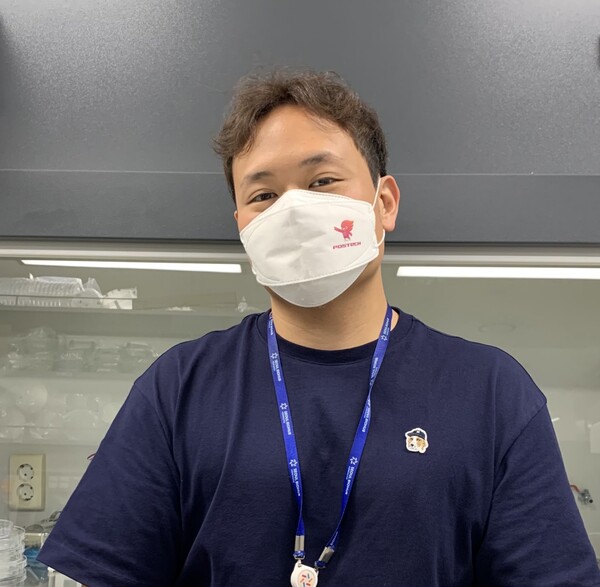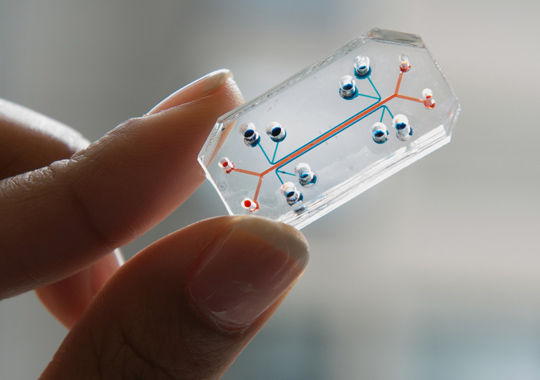
In 2021, 4.88 million animals were used for animal testing, with an average of 13,000 animals per day - approximately 4 million animals are being used annually. Most of the experiments are implemented for safety or quality assessments of products, essentially required by law, and it is surely clear that animal testing has led to new observations and the development of numerous drugs. The majority of animal testing, however, is executed to predict and prevent the pain humans might go through. In other words, all animal testing has the potential to cause unpredictable agony and suppression to the animals. For such ethical reasons, voices against animal testing have risen. Furthermore, there have been doubts on the effects of products on humans with the results drawn by animals.
What is Animal Testing?
The term “animal testing” can be defined as experiments or scientific procedures performed on living animals for various purposes. These include research and test in terms of basic biology and diseases, testing the effectiveness of new medicinal products and improving human health or protecting the safety of consumer and industry products such as cosmetics or food additives. Animal testing is done in various forms. In the field of medicine or biology, animals’ genetic characteristics, growth processes, and behavior patterns are observed and studied through dissection. Sometimes, materials for medicine are collected as well.
Experimental Animals
Animal testing has created new terms such as “experimental animal” or “laboratory animals.” Using any ordinary animals can lead to inconsistent results due to individual characteristics of each animal, such as genetic differences or diseases. This makes it hard to find the causes of differences in the results with the same species. Thus, to prevent such problems and increase credibility, animals with homogeneous genes, which are more likely to behave the same under certain conditions, are being produced in large amounts. Representative examples are mice, rats, hamsters, rabbits, and dogs.
The History of Animal Testing
The history of animal testing dates back to the Ancient Greeks. Hippocrates discovered the field of reproduction and heredity using animal dissection, and similarly, Aristotle developed anatomy and embryology through the observation of animals. Aelius Galenus, a Roman surgeon, was widely known for his discovery of medical facts about the heart, bones, muscles, and cranial nerves by dissecting many animals including monkeys, pigs, and goats.
It was after the 19th century that animal experiments were used in earnest in toxicology and physiology. Animal testing using sheep was the foundation of research on the anthrax and vaccine experiments conducted by Louis Pasteur, and Russian physiologist Ivan P. Pavlov was also well known for conducting conditioned reflex experiments using dogs.
While animal testing became the key to scientific development, those against it appeared simultaneously. Marie Françoise Martin, the wife of French psychologist Claude Bernard who had actively used animal testing for his research, established the first anti-animal dissection society in France in 1883 after watching her husband’s experiments. This was an achievement subsequent to Charles Darwin’s passing of the Cruelty to Animals Act in 1876.
Animal Testing: How is It Helpful?

Jang Goo, a Professor in the College of Veterinary Medicine at Seoul National University, claims, “ The biggest advantage of animal testing is that it can give us the most accurate information we know about upcoming diseases and their causes. An alternative to animal testing should indeed be developed, but it will be impossible to completely replace it.”
Animal testing has contributed to the development of many fields to this day, especially in terms of the medical world. For instance, according to the Agence France-Presse (AFP), Professor Gunda Georg and her group at Minnesota University verified the effectiveness and safety of male contraceptive pills “YCT529,” through animal testing done on mice. For four weeks, injecting “YCT529” into male rats resulted in a block of protein function, and this eventually reduced sperm count. The effects of contraception were 99 percent, and four to six weeks after discontinuance of injections, the reproductive function went back to normal and pregnancy was successful.
Likewise, the Ministry of Science and ICT asserted that research teams from the Institute for Basic Science and Yale University have investigated the treatment principle of Post Traumatic Stress Disorder (PTSD) through animal testing. By injecting the novel psychological drug “NYX-783” into mice, the test subjects showed a reduced sense of fear 24 hours after being exposed to testing conditions that inflicted a state of fear. Thus, animal testing opened up a new path of medical treatment for PTSD, overcoming the low cure rate that had reached only 50 percent in the past. On this wise, animal testing has paved the way for advancement in many fields of the human industry.
Abuse in Darkness
During the past few years, people have shown opposition to animal testing for a variety of reasons. The first reason is animal abuse. The cruelty and neglect of animal welfare often occur during animal testing. Many cases have been found to support such claims.
In February, it was alleged that Neurolink, a neuroscience startup founded by Elon Musk, abused monkeys in its brain experiments. The Physicians Committee for Responsible Medicine (PCRM), an animal rights group, called on the U.S. federal government to investigate Neurolink for violating animal welfare laws. The organization received reports about the experiment and autopsy records through a lawsuit for information disclosure, and it pointed out that UC Davis conducted illegal experiments with Neurolink based on the document. Of the 23 monkeys that were put into the experiment, only seven survived, with the adhesive material used for surgery destroying the monkeys’ brains.
In January, Vivo Technia, an animal medicine company that signed an animal experiment contract with the University of Barcelona, was also involved in the animal abuse issue. Lex Ànima and Cat and Dog Protection for Animals (CPDA), associations for animals, found out that the company had planned to kill 32 beagles that were put into animal testing. This enraged the public because the company was criticized for animal cruelty before. Several animal associations held a demonstration in Barcelona’s Plaça Sang Jaume to stop the abuse, and the Barcelona Bar Association helped them to file a lawsuit in the Spanish Supreme Court to block Vivo Technia's slaughter plan.
Raising the Question of Its Necessity

The second reason against animal testing is that it is usually repeated unnecessarily. A total of 4.14 million animals died in Korea in 2020, of which 1.15 million were used for university experiments. Also, more than 35,000 animals were used for education and training, not for research purposes. Jin, a student from Knot, a Healthcare Student Group, stated, “An animal experiment course was included in the practical training of the mandatory subjects. One shocking experiment was counting how many times mice injected with painkillers jumped on hot iron plates to check the effectiveness of a drug that had already been proven to be useful. It was a terrible memory for many students including me. There are two main reasons why we believe that unnecessary animal testing in universities must be abolished. The first is the issue of animal welfare. Numerous experimental animals have died formally and informally. It is inappropriate not to comply with the 3R principle of animal testing ethics, while not putting in effort to reduce the number of animals used in experiments. The second is the invasion of studentsʼ educational rights. It is inappropriate to take unnecessary time to conduct an unwanted experiment which can easily be replaced with other resources such as a video.”
Questioning the Accuracy of Animal Testing Results
Another reason to oppose animal testing is its inaccuracy. The purpose of animal testing is to conduct experiments on animals most similar to humans to avoid the dangers of conducting experiments on humans. However, if the similarity is not high, can we say that animal testing is accurate?

Ha Dong-heon, CEO of EDmicBio Incorporated, stated that only 8 percent of results deducted by animal testing are effective in actual clinical practice. This inaccuracy is due to environmental and physical differences between humans and animals. In addition to reasons of animal welfare, animal testing can be replaced in terms of its accuracy. It can prevent the waste of resources used for 92 percent of experiments that are not regarded as accurate.

Likewise, of over 30,000 diseases that humans have, only 1.16 percent are shared with animals. Drugs that are safe for animals can cause side effects for humans. Oraflex, known as Opren, was once used to treat arthritis and had a terrible result. It had been tested safely in dogs, rats, guinea pigs, monkeys, and mice. Yet it was highly toxic in humans. The side effects were officially reported for 3,963 people and more than 7,000 people sought help from the Opren action group. Nam In-soon, a Member of the National Assembly in South Korea stated, "Alternatives to animal testing are spreading worldwide to reduce animal sacrifice and improve the accuracy of human applications. As a result of participating in the field meeting to revitalize alternative testing methods, I felt that each government department should manage the research and development of the technology as a national project, not as a segmental project. We also need to promote relevant legislation to improve the health of people in Korea.”
Possible Future Alternatives
With the help of technological and scientific growth, there have been several alternatives selected throughout the years. One of them is the OOC, short for organ-on-a-chip, which is a small plastic chip that constructs a human body-like environment, arranging human tissue cells directly on a chip. This consists of many types, such as lung-on-a chip, kidney-on-a chip, or bone marrow-on-a-chip.

CEO Ha and his co-founders have created a 3D OOC that can act as a substitute for animal testing with the use of more than 15 years of 3D bioprinting research experience, along with the worldʼs first tissue and organ-derived bio-ink technology. He stated, “3D bioprinting technology creates organs such as livers, lungs, and hearts, and allows these small unit organs to be loaded onto chips to enable evaluation of drug toxicity or effectiveness.” Since these simulate the biochemical environment of the human body, they can not only save the lives of experimental animals being sacrificed but also increase efficiency in the process of developing new drugs while overcoming the inaccuracy that differences between animals and humans can bring when depending on animal testing.
Furthermore, the Korea Institute of Basic Science has developed a “bone simulation chip,” which can accurately determine the effectiveness of new drug substances for bone diseases such as osteoporosis by analyzing optical images through algorithms with artificial intelligence. Since it contains substances directly extracted from bone cells, it optimizes biocompatibility with the maturation of bone cells. The environment around the bones has been constructed similarly in the matter of functions, and the accuracy of its results was over 97 percent. Such discoveries have left the door open for partial replacement of animal testing, though it may be difficult to take its place completely.
What Should We Do for Healthier Experiments?
Although substantial efforts to protect experimental animals have begun recently, theoretical efforts have been made steadily to protect the ethics of experimental animals. The most representative theory is the 3R principle, presented in 1959 by British Zoologist William Russell and Microbiologist Rex Burch. It defines three key principles that should be in animal testing: replacement, reduction, and refinement. “Replacement” means developing alternative testing methods that can produce effective results without conducting animal testing, “reduction” means minimizing the number of animals used when animal testing is inevitable, and “refinement” means steadily managing facilities and methods of an experiment for experimental animal welfare.
Along with these three principles, Professor Jang contends, “An additional ‘R’ is needed – Rejection. Veterinarians involved as supervisors of animal testing currently go through consideration before experiments are implemented, but there is no option for them to reject the process beforehand. If there is too much cruelty or violence, I think that animal testing should be rejected."
Environmental conditions have a major impact on the laboratory animal throughout its life and will thereby influence the outcome of animal experiments. One possible way to improve the living conditions of laboratory animals is to provide opportunities for the animals to perform a species-specific behavioral repertoire. It is important to evaluate environmental enrichment in terms of the benefit to the animal by assessing the preference for certain enrichment, the effect on behavior, and the performance of species-specific behavior. Environmental enrichment for laboratory animals can also make better experiment results. Improving the quality of the captive environment so that the animal has a greater choice of activity increases its behavioral diversity. Additionally, the program can reduce the frequency of abnormal behavior, and increase the complexity of neurobehavioral research.

Shin Nam-shik, a Professor Emeritus from the College of Veterinary Medicine at Seoul National University stated, “The biggest goal of the animal behavior enrichment program is animal welfare. Isolated environments can cause chronic stress in animals and cause abnormal phenomena such as self-abuse and obesity. The feasibility, cost, and risk factors of the program should be considered in general. If introduced, post-management is very important. This must be changed continuously catching up with the animalsʼ adaptability to the environment.”
Health monitoring of experimental animals should be regarded significantly. According to Chun Chae- un, the Founder of Action for Animals, facilities that have systems that are well managed require veterinarians to observe all animals used in experiments during periods when animal testing is in the process so that sanctions can be applied if health conditions turn out to be severe for certain animals. Despite the necessity, many institutes that use animal testing are not equipped with well-organized systems. Such health monitoring systems of experimental animals should be one of the mandatory stages that people involved in the process should think highly of.
Another way to solve the structural side effects of animal testing is to carefully deal with the welfare of people engaged in animal testing. Even if animal experiments are useful and valuable at the level of knowledge acquisition, the psychological state of researchers and students on animals at the forefront of the experiment will inevitably be exhausted.
Gradual but Solid Changes

Animal testing has been an important background for humans to win many victories in the war against disease. However, we must understand its side effects. The psychological pain of animal testing workers is increasing day by day as animal abuse problems continue to arise. What is important in this situation is to minimize the drawbacks of animal testing. Founder Chun said, “Animal testing is inevitable, but that does not mean that animals can be treated carelessly. We should create standards and help them to avoid fear or stress as much as possible from birth to death.”
A cooperation of laboratory facilities, laboratory animal welfare, and workers will provide safer and more reliable scientific research results. It will not be easy to completely abandon the progress of animal testing, but efforts must be continued for replacement while balancing it with alternative testing.

